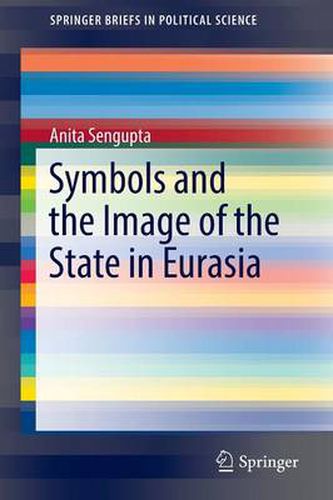Readings Newsletter
Become a Readings Member to make your shopping experience even easier.
Sign in or sign up for free!
You’re not far away from qualifying for FREE standard shipping within Australia
You’ve qualified for FREE standard shipping within Australia
The cart is loading…






This title is printed to order. This book may have been self-published. If so, we cannot guarantee the quality of the content. In the main most books will have gone through the editing process however some may not. We therefore suggest that you be aware of this before ordering this book. If in doubt check either the author or publisher’s details as we are unable to accept any returns unless they are faulty. Please contact us if you have any questions.
This book discusses the significance of cultural symbols/‘images’ in the nation-building of Eurasian states that emerged out of the former Soviet Union. It particularly focuses on the cases of Uzbekistan and Kazakhstan in the post-Soviet era and argues that the relationship between nation- and image-building has been particularly relevant for Eurasian states. In an increasingly globalized world, nation-state building is no longer an activity confined to the domestic arena. The situating of the state within the global space and its ‘image’ in the international community (nation branding) becomes in many ways as crucial as the projection of homogeneity within the state. The relationship between politics and cultural symbols/ ‘images’, therefore acquires and represents multiple possibilities. It is these possibilities that are the focus of Symbols and the Image of the State in Eurasia. It argues that the relationship between politics and cultural symbols/ ‘images’, became particularly relevant for states that emerged in the wake of the disintegration of the Soviet Union in Central Asia. It extends the argument further to contend that the image that the state projects is largely determined by its legacy and it attempts to do this by taking into account the Uzbek and Kazakh cases. In the shaping of the post-Soviet future these legacies and projections as well as the policy implications of these projections in terms of governmentality and foreign policy have been decisive.
$9.00 standard shipping within Australia
FREE standard shipping within Australia for orders over $100.00
Express & International shipping calculated at checkout
This title is printed to order. This book may have been self-published. If so, we cannot guarantee the quality of the content. In the main most books will have gone through the editing process however some may not. We therefore suggest that you be aware of this before ordering this book. If in doubt check either the author or publisher’s details as we are unable to accept any returns unless they are faulty. Please contact us if you have any questions.
This book discusses the significance of cultural symbols/‘images’ in the nation-building of Eurasian states that emerged out of the former Soviet Union. It particularly focuses on the cases of Uzbekistan and Kazakhstan in the post-Soviet era and argues that the relationship between nation- and image-building has been particularly relevant for Eurasian states. In an increasingly globalized world, nation-state building is no longer an activity confined to the domestic arena. The situating of the state within the global space and its ‘image’ in the international community (nation branding) becomes in many ways as crucial as the projection of homogeneity within the state. The relationship between politics and cultural symbols/ ‘images’, therefore acquires and represents multiple possibilities. It is these possibilities that are the focus of Symbols and the Image of the State in Eurasia. It argues that the relationship between politics and cultural symbols/ ‘images’, became particularly relevant for states that emerged in the wake of the disintegration of the Soviet Union in Central Asia. It extends the argument further to contend that the image that the state projects is largely determined by its legacy and it attempts to do this by taking into account the Uzbek and Kazakh cases. In the shaping of the post-Soviet future these legacies and projections as well as the policy implications of these projections in terms of governmentality and foreign policy have been decisive.